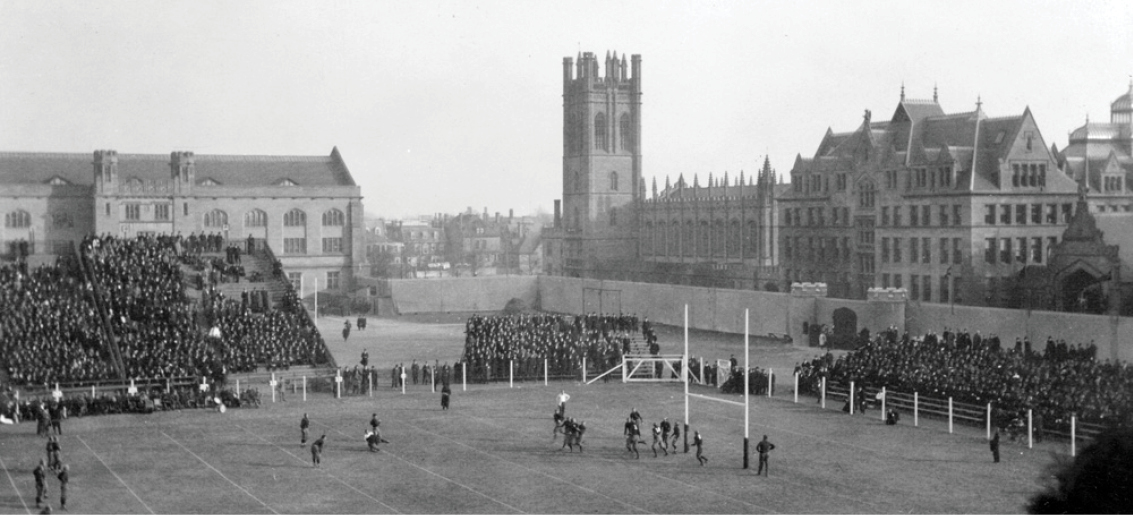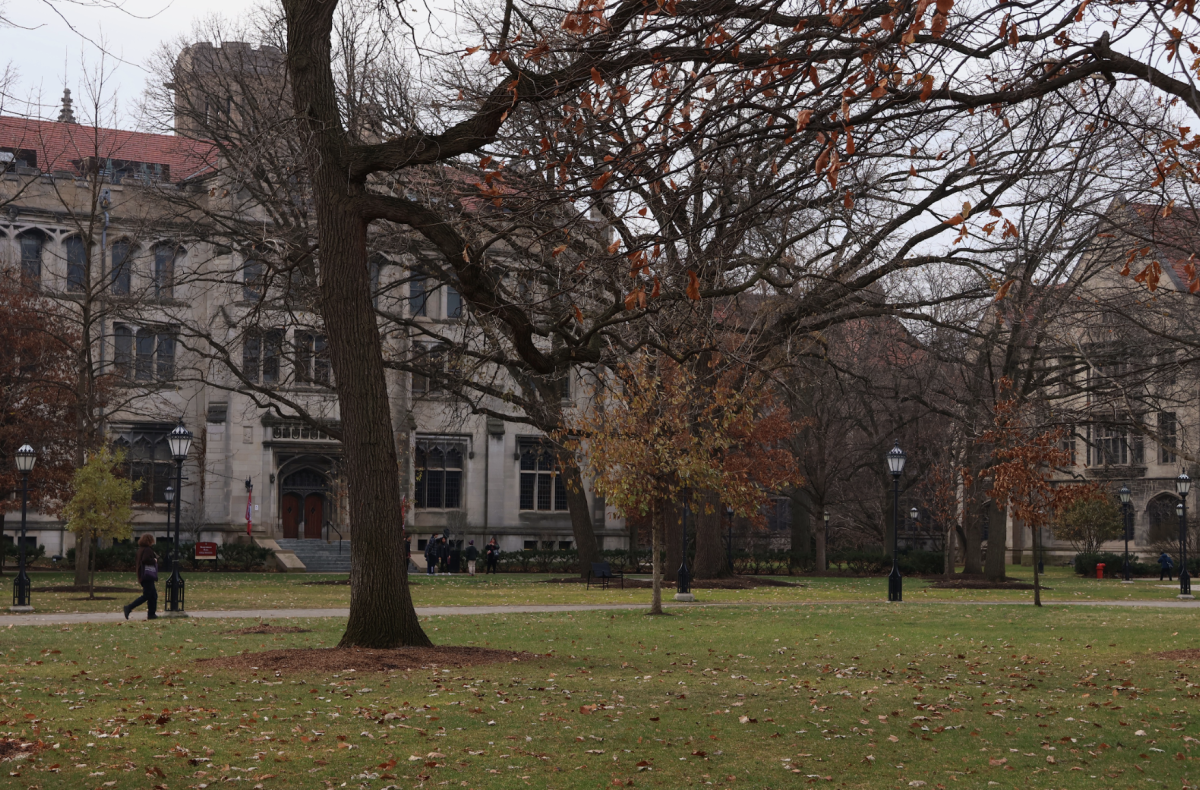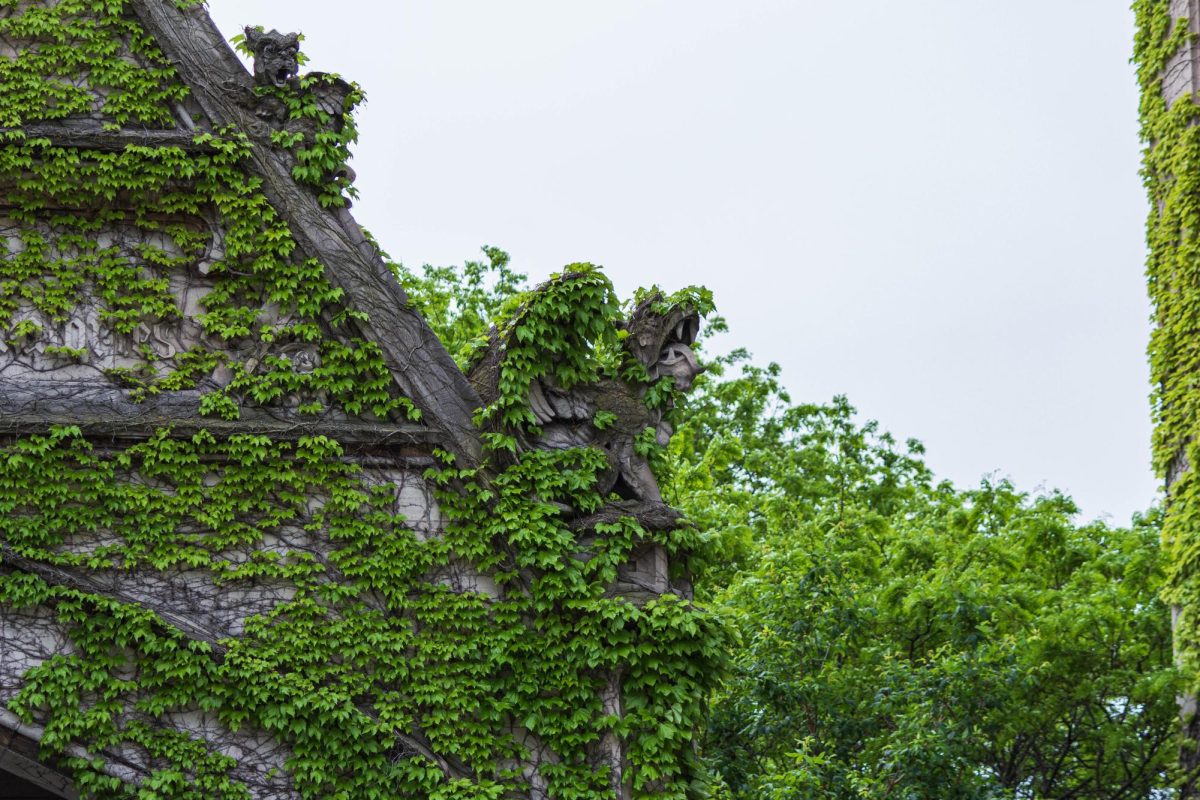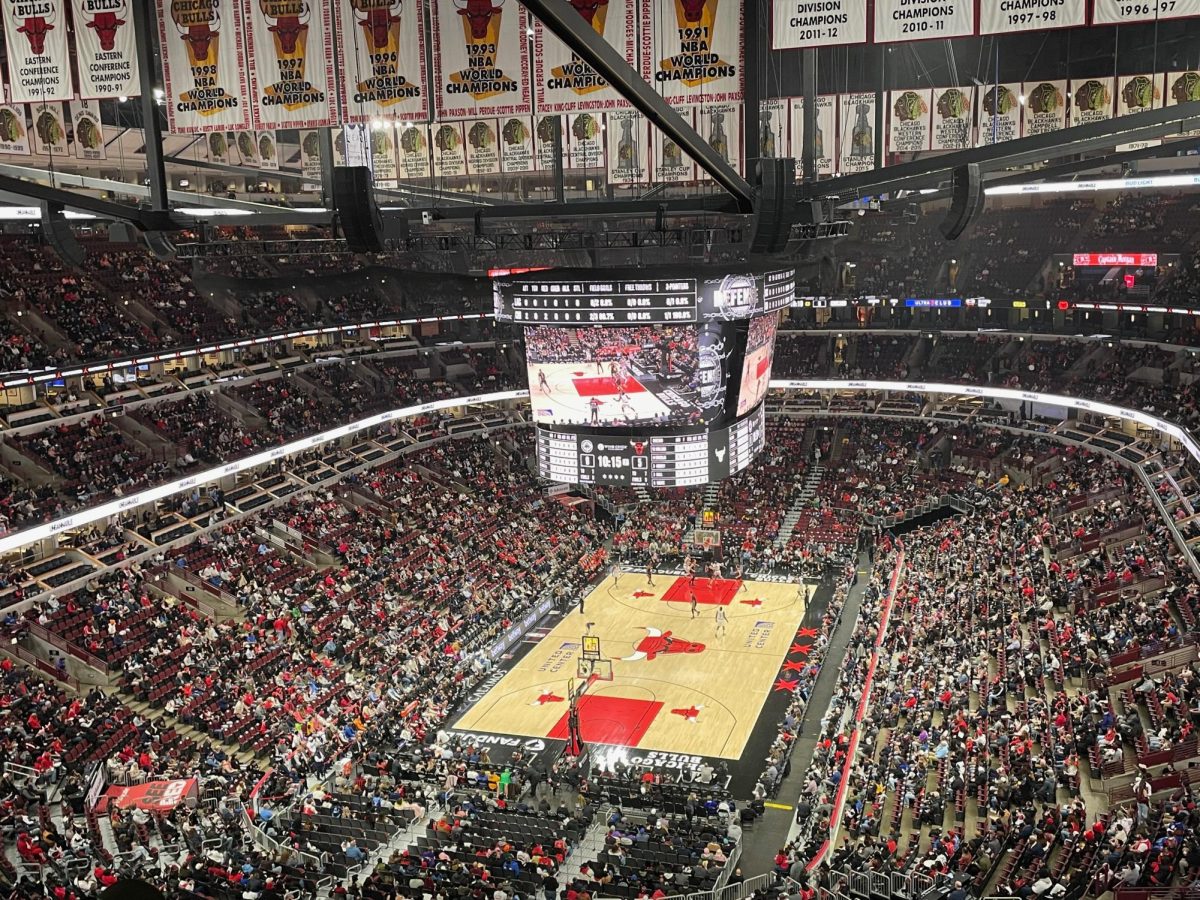From 56th to 57th Street between Ellis and University Avenues sit many studying students, Ex Libris Café, and over four and a half million printed volumes. While the Joseph Regenstein and Joe and Rika Mansueto libraries currently house late study sessions, the block used to be home to the Maroons—the athletic ones, that is.
Sports at the University of Chicago have an eventful history, often going up against the academic focus of the College. Stagg Field, the heart of UChicago athletics, has its own colorful past of national champions, a very large bass drum, and physicists changing the course of history from the squash court.
The Old Man
In 1893, Marshall Field was built shortly after the opening of the University. Coincidentally, the field was the namesake of the man who donated the land, Marshall Field. Snell-Hitchcock Hall residents could peer out their dorm windows and breathe in school spirit right over the endzone. Possessing a maximum capacity of 58,000, fans flocked to the stadium to watch the Maroons play football. Games routinely sold out, the Maroons were a member of the Big Ten Conference, the marching band played the world’s largest bass drum, and the University of Chicago was celebrated for academics and athletics.
For decades Marshall Field experienced a roaring athletic scene, during which it was renamed Stagg Field, honoring the man responsible for much of the Maroons’ success: Amos Alonzo Stagg. Even as a Yale graduate, Stagg’s heart was maroon. Starting at the school in 1892, he would go on to become one of the nation’s most successful amateur sports coaches. As director of the Department of Physical Culture and coach of several teams for 40 years, Stagg led UChicago’s athletics to great heights on his turf.
While he also served as head coach of the basketball team from 1920–21 and the baseball team for 20 seasons, Stagg made his legacy in track and field and football. He even coached the U.S. Olympic Track and Field team in the 1924 Paris Summer Olympics. Stagg Field hosted events like the USA Outdoor Track and Field Championships, NCAA Men’s Championships, and a regional qualifying meet for the U.S. Olympic Trials in 1936. However, it was the pigskin that brought the biggest crowds. By 1924, the Stagg-led football program had yielded the school seven Big Ten titles and two national championships.
Towards the end of his career at UChicago, Alonzo Stagg was known around campus as “the Old Man,” but he remained enthusiastic, vibrant, and athletic enough to play tennis daily. He was forced into what to him was premature retirement from an active role at the University in 1932—he was 70.
With only one Stagg left, football on Stagg Field faced new highs and lows. Jay Berwanger won the first-ever Heisman trophy in 1935, but with weakening support, football was discontinued shortly after in 1939. The University of Chicago left the Big Ten in 1946, but not before another first was achieved at the stadium. Under it, to be exact.
A New Era
Beneath the west stands at 3:25 p.m. on December 2, 1942, Enrico Fermi and other scientists from the Metallurgical Laboratory created the first controlled, self-sustaining nuclear chain reaction after 28 minutes. Unbeknownst to the students walking around on an ordinary Wednesday, the Manhattan Project and Chicago Pile-1—the world’s first artificial nuclear reactor—proved the possibility of creating the atomic bomb. They had effectively started the atomic era in a laboratory on a squash court.
Despite being unrelated to sports, the reaction was one of numerous firsts and beginnings achieved at Stagg. In 1957, the original field was demolished. In its place stands the Joseph Regenstein Library which, opened in 1970, fittingly containing the University’s athletic records of the achievements made there. Stagg Field was rebuilt from 55th to 56th Street between Cottage Grove and Ellis Avenues, an eight-minute walk away. With a modest capacity of 1,650, the field hosts several sports, including football, which returned as a varsity sport in 1969.
On the southwest corner of the new field, the looming concrete frame around the ornate, original wooden gate reads “Amos Alonzo Stagg Field.” One hundred years ago, they would have revealed a packed stadium of impassioned fans. Today, they lead to a smaller but dedicated crowd cheering on the Maroons. Let’s just hope there are no more labs under the bleachers.

















John W Welch / Nov 19, 2024 at 10:05 am
Stagg Field was knocked down sometime in the 1967-68 school year. Not 1957, as the article says. I took Phys Ed on Stagg Field in Fall ’66, and probably Spring ’67. During Winter Quarter, we ran around Bartlett Gym’s uneven balcony floor.
Most of Stagg Field was still there when UC dedicated the Henry Moore sculpture, the combination skull / Greek helmet / mushroom cloud. Yes, I covered that for the Maroon. (The University’s administration had a paranoid’s fear of anti-war demonstrations. It thought that the UC SDS Chapter would protest.)